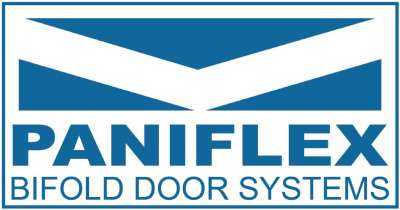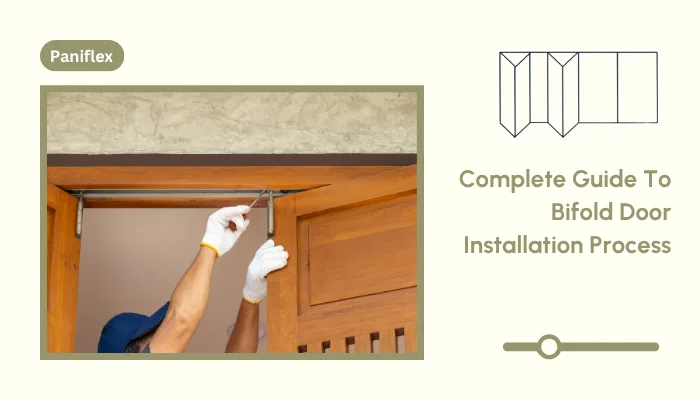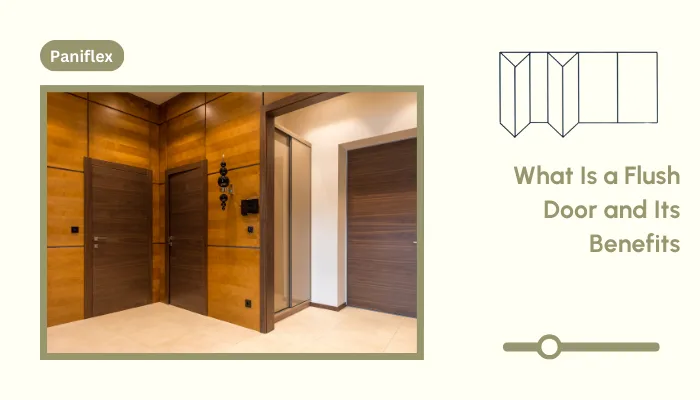Installing bi-fold doors is crucial for architects, contractors, and interior designers who want to deliver exceptional client results.
These versatile door systems can transform spaces by maximizing usable area while adding a touch of contemporary elegance to any room.
Custom Door and Mirror has been crafting premium bi-fold doors for over 60 years, serving professionals throughout the New York metropolitan area, Long Island, New Jersey, and Connecticut.
Their experience has shown that even the highest quality doors will underperform without proper installation techniques. Nearly 75% of bifold door issues stem not from manufacturing defects but from installation oversights.
This comprehensive guide walks you through each step of the bifold door installation process, from preparation to final adjustments.
We’ll cover the essential tools, precise measurements, hardware installation, and troubleshooting techniques that ensure your installations meet exacting standards.
Let’s begin with understanding what you’ll need before the first screw is placed.
Ready to experience the benefits of custom closet doors? Explore our range of Paniflex products now.
Tools and Materials Required For Bifold Door Installation
Gathering the right tools and materials before starting the installation process ensures a smooth and efficient project from start to finish.
Professional installations require professional preparation, and having everything at hand prevents costly delays and improvisation that might compromise the final result.
Essential Tools
The right tools make all the difference when installing bifold doors. Your primary tool for securing hardware to the door and frame is a quality drill with various bits.
A laser level provides the precision required for perfect alignment—even minor deviations can cause operational issues.
Additionally, you’ll need a tape measure (preferably one with 1/16-inch increments for exact measurements), a screwdriver set with various heads, a utility knife for trimming if necessary, and a rubber mallet for gentle adjustments without damaging the door panels.
Custom Door and Mirror recommends having specialized door installation tools, such as a door jack and shims, allowing perfect positioning while working alone.
These tools have proven invaluable for contractors and installers working with precision-engineered custom bifold systems, where tolerances are measured to the nearest quarter-inch.
Materials Required
The bi-fold door kit, which includes the door panels, track system, and basic hardware, forms the foundation of your installation.
However, professional installers often supplement these with additional materials for optimal performance. High-quality screws appropriate for your specific wall material provide better anchoring than standard screws included in kits.
Anchors may be necessary for certain installations, particularly in drywall without convenient stud placement.
A premium silicone-based lubricant—not WD-40, which can attract dirt—ensures smooth operation over time.
Custom Door and Mirror offers specialized track lubricants for its bifold door systems.
These products provide superior performance in high-use commercial and residential applications without leaving residue that can transfer to hands or clothing.
Safety Equipment
Eye protection isn’t optional when working with power tools and materials that may create flying debris. Quality safety goggles that don’t fog up allow clear vision throughout the installation.
Work gloves protect your hands from cuts and splinters and provide a better grip when handling door panels. Consider respiratory protection if you’re modifying doors or working with certain materials.
Having the right tools and materials prepared before starting your installation saves time and contributes significantly to the professional quality of the finished product.
With everything ready to go, the next crucial step is to prepare the space where your new bifold doors will function.
Let’s explore how proper preparation sets the stage for a successful installation.
Preparing for Installation
Thorough opening preparation is the foundation of a successful bifold door installation. This critical pre-installation phase can determine whether your doors will operate flawlessly for years or require constant adjustments and repairs.
Proper preparation can save hours of troubleshooting later.
Measuring With Precision
Accurate measurements form the cornerstone of any door installation project. When measuring your opening, you’ll need to take width measurements at the opening’s top, middle, and bottom.
You must measure height at the left, center, and right sides. This approach accounts for any inconsistencies in the frame that might not be immediately visible.
The industry standard suggests allowing a 1/2-inch clearance on both sides and at the top of the opening for most pre-manufactured bi-fold doors.
However, Custom Door and Mirror’s ability to create doors to exact specifications, down to the quarter inch, offers architects and contractors a significant advantage for challenging spaces.
Unlike standard solutions that might require modifying the opening, Custom Door and Mirror’s bi-fold doors are manufactured to fit your existing opening perfectly, saving considerable time and preventing structural modifications.
A National Association of Home Builders study found that door-related callbacks account for approximately 18% of post-construction service requests, with improper fit being the leading cause.
Design professionals can dramatically reduce these costly callbacks by investing time in precise measurements and utilizing Custom Door and Mirror’s quarter-inch precision manufacturing.
Clearing the Canvas
Before installing new bi-fold doors, you must remove existing doors, tracks, and hardware. This process requires patience and care to avoid damaging the surrounding frame or wall surfaces.
Start by removing the door panels, the track systems, and any remaining hardware. When removing old hardware, keep track of the locations where it was attached to help identify potential anchor points for your new installation.
These areas often have existing structural support that can be advantageous for mounting new hardware.
Document any unexpected findings during removal, such as non-standard framing or hidden utilities, as these may influence your installation approach.
Create a Level Foundation
Even the most precisely manufactured door cannot function properly in an unlevel frame. Check the header and floor for true level and plumb using your laser level.
Our experience at Custom Door and Mirror shows that a deviation of just 1/8 inch over a standard 36-inch door width can cause noticeable operational issues and premature wear on hardware components.
They offer specialized solutions for situations where the opening isn’t perfectly square, including tapered door options and adjustable hardware systems designed specifically for out-of-square openings.
These innovative products allow design professionals to maintain clean, consistent sight lines even when working with challenging structural conditions. You’re ready to begin installation once you’ve thoroughly prepared your opening.
The care taken during this preparation phase directly influences the ease of the upcoming hardware installation and the long-term performance of your bifold door system.
With our preparation in place, it’s time to install the track and door hardware to support your new bifold doors.
Installing the Track and Door Hardware
Your bifold door project begins to take physical form in the track and hardware installation phase.
This critical stage establishes the framework to guide and support your doors through thousands of opening and closing cycles.
Getting these elements right is essential for smooth operation and longevity.
1. Assemble and Mount the Track System
The overhead track is the primary guide for your bifold doors, making its proper installation the most important step.
Begin by examining the track components to understand how they fit together. Most track systems come in sections that must be assembled before mounting, with connection points designed to create a smooth, continuous surface for the door rollers.
When positioning the track, the standard recommendation is to center it in the opening, allowing equal spacing on both sides. However, real-world openings rarely conform perfectly to standard dimensions.
Custom Door and Mirror’s track systems address this challenge with adjustable mounting brackets.
They can accommodate up to 3/8-inch lateral adjustment after installation—a feature particularly valued by contractors working on renovation projects.
Once positioned, secure the track using the recommended fasteners, ensuring they penetrate solid structural material.
A common mistake is using fasteners that are too short, which can lead to track separation under the weight and movement of the doors.
Inadequate track mounting accounts for approximately 35% of bifold door failure issues within the first year of installation.
Custom Door and Mirror’s bi-fold door track systems include pre-drilled mounting holes specifically calculated to distribute weight loads optimally across the entire track length.
2. Secure Floor Brackets
While the overhead track guides the door’s movement, the floor brackets provide the foundation that keeps everything stable and aligned. Place the pivot bracket at the jamb side of the opening, where the door will be hinged.
This bracket should be positioned so that when the door is closed, it aligns perfectly with the jamb while maintaining the recommended gap (typically 1/8 to 3/16 inch).
Intermediate brackets may be necessary for wider openings requiring multiple door panels.
Custom Door and Mirror’s innovative floor bracket design features micro-adjustment capabilities that allow for fine-tuning even after hanging doors.
This feature has proven valuable for high-end installations in luxury properties, where precision alignment is expected down to the millimeter.
The positioning of these brackets requires careful measurement. Experienced installers use the helpful approach of measuring from the back of the opening rather than the front edge, which provides a more consistent reference point.
Secure all floor hardware with appropriate anchors based on your flooring material such as wood screws for hardwood, concrete anchors for masonry, and specialized hollow-floor anchors for raised flooring systems.
3. Aligning Door Hardware
With the track and floor brackets in place, the next step is to prepare the door panels with the necessary hardware.
Each door panel requires specific components connecting the track and pivot points. The hardware kit typically includes pivot pins, alignment brackets, and rollers that you must install according to the manufacturer’s specifications.
When installing these components, pay particular attention to the height adjusters on many quality hardware systems. These adjusters allow for vertical positioning of the door panels, ensuring proper clearance at the bottom while maintaining alignment at the top.
Custom Door and Mirror’s premium hardware sets feature tool-free adjustment mechanisms that allow for fine-tuning without removing the doors. This time-saving feature makes them popular among contractors managing tight project timelines.
One often-overlooked detail is the positioning of the rollers relative to the track. The rollers should be oriented so they track smoothly without binding, with their axis perpendicular to the direction of travel.
Misaligned rollers create unnecessary friction that can dramatically reduce the lifespan of both the rollers and the track.
With the track system mounted securely overhead, floor brackets precisely positioned, and door hardware properly installed, you’ve created the infrastructure needed to support your bifold doors.
The next phase combines everything as we hang the door panels and begin the critical alignment process that transforms separate components into a cohesive, functioning system.
Hang the Bifold Doors
The moment of truth arrives as you prepare to hang your bifold door panels, transforming separate components into a functional system.
This stage combines all your previous preparation and hardware installation efforts, making it exciting and critical to the project’s success.
Attach Door Panels
Begin by identifying the lead panel containing the pivot hardware that connects to the jamb.
Carefully lift this panel and engage the top pivot pin with the pivot socket in the track, then lower the panel to engage the bottom pivot pin with the floor bracket.
This process requires patience and precision, as misalignment at this stage can damage the hardware or door panel.
A single person can typically manage this operation for standard-sized openings, but wider or taller custom doors often require two installers working in tandem.
Custom Door and Mirror’s door systems, designed with the professional installer in mind, feature guided insertion points that help align the panels with their corresponding hardware, reducing the precision required during this delicate operation.
After securing the lead panel, proceed to the remaining panels, working your way across the opening. Each subsequent panel connects to the previous panel (via hinges) and the overhead track (via roller hardware).
Take care to support the weight of each panel throughout this process until it is fully secured to prevent strain on the connection points.
Hardware damage during the hanging process accounts for nearly 20% of warranty claims on bifold door systems.
To minimize this risk, Custom Door and Mirror’s door panels come with pre-installed hardware that’s been factory-aligned and tested, significantly reducing the possibility of damage during installation.
Proper Adjustment
Once all panels are hung, the door system will likely require adjustment to achieve optimal operation. Begin by checking that the panels hang plumb and maintain consistent spacing when closed.
Using the adjustment mechanisms provided with your hardware, make small, incremental changes to the positioning of each panel, testing the door operation after each adjustment.
The vertical adjustment is typically addressed first, ensuring proper floor clearance while maintaining alignment with the top track.
Most quality hardware systems, including those custom-engineered by Custom Door and Mirror, provide adjustment ranges of approximately ¼ inch, allowing installers to compensate for minor opening or floor level variations.
Horizontal spacing adjustments are made to create consistent gaps between panels and between the outermost panels and the jambs.
The goal is to achieve parallel alignment throughout the system while maintaining gaps of approximately 1/8 inch. These gaps should be narrow enough to create a clean visual appearance yet wide enough to prevent binding during operation.
Professional installers often approach these adjustments systematically, working from the pivot side toward the leading edge.
Each adjustment can influence the positioning of subsequent panels, and this methodical process typically requires several iterations to achieve optimal results.
Ready to experience the benefits of custom closet doors? Explore our range of Paniflex products now.
Proper Door-to-Frame Relationship
The final aspect of hanging involves verifying the relationship between the door panels and the surrounding frame.
When closed, the doors should sit parallel to the opening with consistent reveal (the visible gap) around all edges. This attention to detail distinguishes professional installations from amateur efforts.
A properly hung door system should open and close with minimal resistance, requiring a light touch to initiate movement.
Custom Door and Mirror’s precision-engineered track systems utilize specialized roller bearings that reduce the operational force required compared to standard systems.
This stage also involves verifying that the strike plates align properly with their corresponding latches for door systems, including locking mechanisms.
Fine adjustments may be necessary to ensure secure engagement without requiring excessive force to operate the lock.
With your bifold doors now hung and operating smoothly, the installation is approaching completion.
However, even the most carefully hung doors benefit from final adjustments and finishing touches that enhance appearance and functionality.
In the next section, let’s explore these refinements that transform a good installation into an exceptional one.
Final Adjustments and Finishing Touches
The final adjustments and finishing touches distinguish a merely functional bifold door installation from one that will operate flawlessly for years to come.
These refinements might seem minor, but they significantly impact the door’s performance and impression on anyone using it.
Fine-Tuning Door Alignment
Even after the initial hanging process, most bi-fold door installations benefit from additional fine-tuning. This process focuses on achieving perfect alignment, both visually and functionally.
Begin by examining the gaps between door panels when closed; these should be consistently spaced at approximately 1/8 inch throughout the entire height of the door.
Work methodically from the pivot side toward the leading edge when adjusting alignment. Many installers find it helpful to place a business card in the gap as they change—the card should slide through with slight resistance at all points, indicating a uniform gap.
According to Custom Door and Mirror installation experts, achieving this level of precision can extend the operational life of bifold door hardware and prevent the uneven wear that occurs when doors make contact during operation.
Pay special attention to the relationship between the doors and the jamb. When closed, the outer edge of the door should sit parallel to the jamb with a consistent reveal (visible gap) from top to bottom.
Custom Door and Mirror’s adjustable pivot hardware allows for micro-adjustments of up to 3/16 inch in multiple directions, providing installers with the precision tools needed to achieve perfect alignment even in openings that aren’t perfectly square.
Securing Hardware
After achieving proper alignment, securing all adjustable hardware in its final position is essential. This step prevents the gradual loosening that can occur through regular use and vibration. Check and tighten all visible screws on the track, brackets, and door hardware.
Consider applying a small amount of non-permanent thread-locking compound for critical connection points, particularly those on the track that bear significant weight. It provides additional security without making future adjustments impossible.
Custom Door and Mirror’s premium hardware sets include self-locking fasteners for door applications. These clever components maintain their tension even under the constant movement and vibration that door systems experience.
Don’t overlook the hinges connecting multiple door panels. You should check for proper tension and ensure they are secure in their final position.
A too-loose hinge will cause door panels to sag over time, while one that’s too tight creates unnecessary resistance during operation.
Proper Lubrication
The final touch in a professional bifold door installation involves properly lubricating all moving parts. This step significantly impacts the operation’s immediate smoothness and the system’s long-term durability.
Begin with the overhead track, applying a thin layer of silicone-based lubricant along the surfaces where rollers come into contact.
Be selective about the lubricant you choose—household products like WD-40 are generally unsuitable for door hardware as they can attract dust and create a gummy residue over time.
Custom Door and Mirror offers a specialized door hardware lubricant formulated specifically for bifold applications. It provides long-lasting protection without attracting debris or transferring to hands and clothing.
Proper lubrication also benefits the pivot points, but use a lighter application to prevent drips that might stain the flooring. Apply the lubricant directly to the moving parts, then operate the door several times to distribute it evenly.
A Door and Hardware Institute study found that properly lubricated door hardware can experience up to 75% less wear over 10 years than unlubricated systems.
Custom Door and Mirror recommends establishing a regular maintenance schedule that includes lubrication every six months for commercial applications where doors are frequently used.
Your bifold doors are now perfectly aligned, securely fastened, and properly lubricated, and they’re ready to provide years of trouble-free service.
However, even the most meticulously installed doors can occasionally present challenges.
In the next section, let’s explore common installation issues and their solutions to address any problems.
Troubleshooting Common Installation Issues
Even with careful planning and precise measurements, you might encounter a few challenges during your bifold door installation.
Understanding how to identify and resolve these issues quickly will save you time and frustration, ensuring your project stays on schedule and meets design expectations.
1. Door Alignment and Track Installation
Proper alignment is the foundation of smoothly functioning bifold doors. When doors don’t align correctly, the issue often stems from the track installation.
If your doors appear uneven or don’t meet properly at the center, check that your track is perfectly level.
Even a 1/16-inch deviation in track levelness can cause noticeable alignment issues. For the most accurate results, use a laser level rather than a standard bubble level.
Sometimes the track mounting screws can loosen during installation, causing the track to shift slightly. Check all mounting hardware and tighten as needed.
For maximum stability, Custom Door and Mirror’s premium track systems include reinforced mounting points that significantly reduce the chance of track movement over time.
Another common alignment issue occurs when the door opening isn’t perfectly square. In older buildings, where contractors frequently face this challenge, you may need to insert shims behind the track or pivot hardware to adjust for any irregularities framing.
2. Difficult Door Operation and Sticking
Doors that drag, stick, or require excessive force to operate frustrate clients and reflect poorly on your craftsmanship. Approximately one-third of service calls for bifold doors relate to operational issues that you might have prevented during installation.
If the doors drag along the floor, the height adjustment is likely incorrect. Most quality bi-fold systems feature adjustable pivots that allow height modifications after installation.
Look for the adjustment screws at the top or bottom pivots and make small, incremental adjustments until the door clears the floor properly.
Sticking or binding during operation often indicates misaligned hardware or improperly installed roller guides. Ensure all rollers are seated correctly in the track and that pivot pins are properly aligned with their brackets.
Apply a small amount of silicone lubricant to the track and pivots. Never use oil-based lubricants, as they attract dust and eventually create more resistance.
Door panels that don’t fold smoothly might have overtightened hinges. The folding action requires some flexibility, so hinges should be secure but not overly tight.
Loosen them slightly and test the folding motion until you achieve the perfect balance between stability and smooth movement.
3. Gaps and Uneven Door Panels
Uneven gaps between door panels or between the doors and frame can ruin the clean lines that architects and designers work so hard to achieve. In high-end residential and commercial projects, these details matter tremendously.
Check that your floor brackets are positioned correctly for gaps at the bottom of the door. They should be installed precisely at the measurements specified in your door kit instructions.
You can use Custom Door and Mirror project-specific installation guides with their doors to eliminate much of the guesswork that leads to these issues.
Side gaps often result from the improper alignment of the pivot brackets. In most cases, you can loosen the mounting screws and make minor adjustments to the bracket position.
For perfect vertical alignment, use a plumb bob rather than relying solely on visual inspection.
The track alignment is typically the culprit for panels that don’t meet evenly at the center. Check that the track is centered precisely over the opening and that the joints are perfectly aligned.
Custom Door and Mirror’s one-piece track designs eliminate joint-related alignment problems, making installation significantly more straightforward for contractors working with tight deadlines.
Now that we’ve explored solutions to common installation challenges, let’s look at how proper maintenance can extend the life and performance of your newly installed bifold doors.
Maintenance Tips for Bifold Doors
Proper maintenance is the key to ensuring your beautifully installed bifold doors operate flawlessly for years to come.
With just a few minutes of care every few months, you can prevent most common issues and extend the lifespan of the hardware and the door panels.
1. Regular Cleaning and Lubrication
The track system is the heart of your bifold door’s operation, and keeping it clean is essential for smooth performance.
Dust, debris, and household particles inevitably find their way into the track over time, creating friction that can damage the rollers and impede door movement.
Clean the tracks at least once every three months using a vacuum with a narrow attachment to remove loose debris for optimal maintenance. Follow this with a damp cloth wipe-down to capture any remaining particles.
Studies show that doors maintained on this quarterly schedule typically last 40% longer before requiring major hardware replacement than those left unmaintained.
After cleaning, apply a light coating of silicone-based lubricant to the track and pivot points. The key word here is “light”—excess lubricant attracts more dirt and can actually worsen performance over time.
Custom Door and Mirror recommends its formulated track lubricant, which protects without excess buildup or stickiness. Silicone sprays work well because they don’t attract dust like petroleum-based products.
The roller mechanisms benefit greatly from this same cleaning and lubrication routine. Gently wipe the rollers with a clean cloth, removing any hair or fibers that might have wrapped around the wheel.
Then, a small amount of lubricant should be applied directly to the roller bearings for whisper-quiet operation.
2. Routine Checks
Even the highest quality hardware can loosen over time due to the natural movement and vibration of opening and closing doors. Architects and designers who specify bifold systems should advise clients about the importance of periodic hardware inspections.
Every six months, take a few minutes to check and tighten all visible screws and mounting hardware.
Pay particular attention to the track mounting screws, pivot brackets, and hinge points—these areas experience the most stress during operation.
Use the appropriate screwdriver type and size to avoid stripping the screw heads, which can make future adjustments difficult.
Watch for signs of wear on pivot pins and brackets, especially in high-traffic installations like office spaces or commercial environments where doors are operated hundreds of times daily.
The commercial bifold door is operated approximately 15-20 times daily, resulting in over 5,000 cycles annually.
Custom Door and Mirror’s commercial-grade hardware is tested to withstand 10,000+ cycles, providing exceptional longevity for busy spaces.
If you notice increasing resistance when operating the doors, examine the rollers for flat spots or damage.
Most quality systems allow for roller replacement without removing the entire door, saving significant time during maintenance.
Interior designers appreciate this feature when specifying systems for client projects, as it minimizes disruption during future service.
Maintaining Door Aesthetics and Functionality
The door panels themselves require attention to maintain their appearance and structural integrity.
Use a soft cloth with mild soap and water to clean laminate or painted surfaces periodically. Avoid harsh chemical cleaners, which can damage finishes or cause discoloration over time.
Wood veneer doors benefit from occasional treatment with furniture polish to restore luster and provide protection against humidity changes.
It is particularly important in regions with seasonal humidity fluctuations, as wood panels can expand and contract slightly with these changes.
Custom Door and Mirror’s engineered door cores are designed to minimize this movement, providing exceptional stability in varied environmental conditions.
Hardware finishes such as brushed nickel, chrome, or brass may develop fingerprints or tarnish over time.
To maintain their appearance, clean these surfaces with products specifically designed for the particular finish. A soft, dry cloth for daily cleaning is usually sufficient to support the luster without damaging the finish.
Consider replacing outdated or worn door pulls and handles every 5-7 years to refresh the look of the entire door system.
Custom Door and Mirror offers coordinating hardware collections that allow for easy updates without replacing the entire door system, a feature architects appreciate when designing spaces meant to evolve.
Now that we’ve covered how to maintain your bifold doors for optimal performance and aesthetics, let’s wrap up with some final thoughts on achieving the perfect custom door installation for your projects.
Ready to experience the benefits of custom closet doors? Explore our range of Paniflex products now.
Conclusion
The installation process of bifold doors represents a critical intersection of technical precision and design vision.
When executed properly, these versatile door systems deliver exceptional functionality and aesthetic appeal, transforming ordinary spaces into thoughtful design showcases.
Professional architects and contractors understand that hardware selection is about appearance and long-term performance. The track system, pivots, and hinges form the operational backbone of every bifold door.
High-quality components typically feature precision engineering that accommodates minor adjustments, which proves invaluable during installation and throughout the door’s lifespan.
Custom Door and Mirror addresses this concern directly by engineering hardware systems that match their door designs. This integrated approach eliminates the compatibility issues that frequently plague installations using components from multiple manufacturers.
Their customization is invaluable for architects working on renovating historic properties in places like Brooklyn or Manhattan. Older buildings rarely feature the standardized openings found in new construction. Visit Custom Door and Mirror’s online store to browse their extensive collection of premium folding door systems tailored to architectural, design, and construction professionals.






